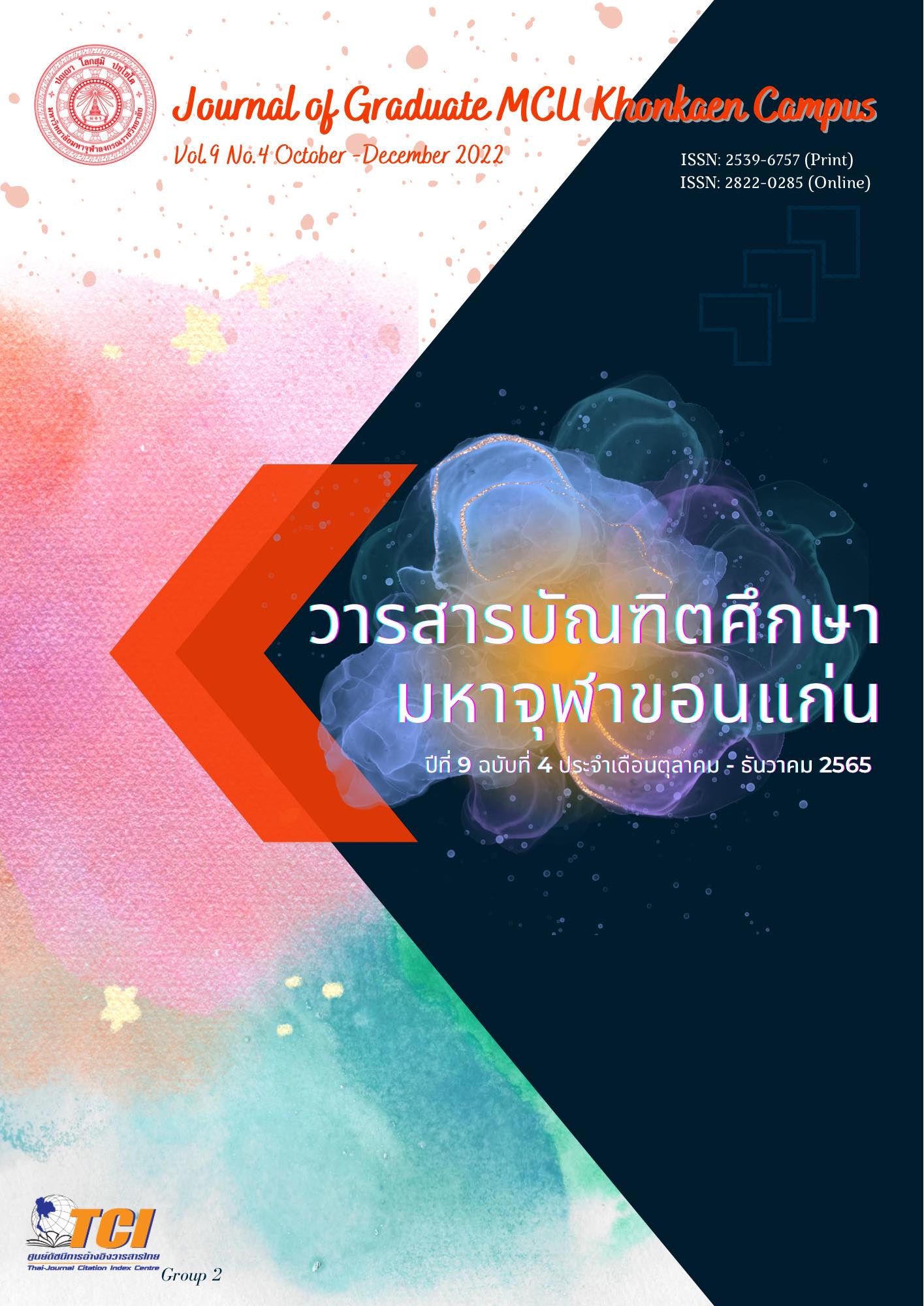Teaching Style of Thai Language in the 21st Century
Main Article Content
Abstract
Thai language problems have existed for a long time until now. This resulted in the deterioration of the Thai language, although most Thais use it in their daily lives for communication as an educational tool, occupation, and use as the national language. Thai people learn the Thai language to use the Thai language correctly, be able to listen, speak, read and write to communicate with others to understand their feelings. ideas and needs as well as having the skills to receive and send messages effectively.
The problem with the use of Thai in social media is caused by rapid technological advances and the use of a niche language that is almost grammatically free. It is a
language transmitted from online conversations. The use of the Thai language arising from the use of social media has continued to spread which has caused many other problems, therefore, we have found that the misuse of the Thai language has become almost familiar. In addition, the conceptual framework for 21st-century skills is widely accepted for building 21st century learning skills. Because it is a conceptual framework that focuses on outcomes that occur to learners. In terms of knowledge of the main subjects that will help students prepare in a variety of fields including learning support systems, such as standards, curriculum, and instruction assessment, teacher development, and an environment suitable for learning. Therefore, the Thai language teaching model in the 21st century should move based on applying the learning theory to teaching the Thai language in a new way, 10 essence Thai teachers should consider in designing. learning in a new era of life, and teaching Thai in a new way of life for seamless learning.
Article Details

This work is licensed under a Creative Commons Attribution-NonCommercial-NoDerivatives 4.0 International License.
References
กระทรวงศึกษาธิการ. (2552). เอกสารประกอบหลักสูตรแกนกลางการศึกษาขั้นพื้นฐานพุทธศักราช 2551. กรุงเทพฯ: โรงพิมพ์ชุมนุมสหกรณ์การเกษตรแห่งประเทศไทย.
การจัดการเรียนรู้คอมพิวเตอร์ ระดับมัธยมศึกษาตอนปลาย, SMIND. (2560). กรอบแนวคิดเพื่อการเรียนรู้ในศตวรรษที่ 21. สืบค้นเมื่อ 22 มีนาคม 2565, จาก http://www.noppawan.sskru.ac.th/data/learn_c21.pdf
กองทุนเพื่อความเสมอภาคทางการศึกษา. (2564). กสศ. สำรวจสถานการณ์เด็กหลุดออกนอกระบบหลังเปิดเทอมใหม่. สืบค้นเมื่อ 22 มีนาคม 2565, จาก https://www.eef.or.th/news-eef-explore-children-falling-out-of-system-after-newsemester/
กุหลาบ มัลลิกะมาส. (2551). ปาฐกถานำเรื่อง “การใช้ภาษาไทยในปัจจุบัน” กรุงเทพฯ: มหาจุฬาลงกรณราชวิทยาลัย.
ครรชิต มาลัยวงศ์. (2560). ทัศนะไอที. (พิมพ์ครั้งที่ 2). กรุงเทพฯ: ศูนย์เทคโนโลยีอีเล็กทรอนิกส์และคอมพิวเตอร์แห่งชาติ.
ดิเรก วรรณเศียร. (ม.ป.ป.). MACRO Model : รูปแบบการจัดการเรียนรู้สำหรับศตวรรษที่ 21. มหาวิทยาลัยราชภัฏสวนดุสิต. สืบค้นเมื่อ 22 มีนาคม 2565, จาก https://regis.dusit.ac.th›images›news›14213084.pdf
พระปลัดสถาพร ปุ่มเป้า. (2564). นวทางการสอนภาษาไทยในชีวิตวิถีใหม่ ท่ามกลางวิกฤตการณ์ COVID-19. Journal of Roi Kaensarn Academi, 6(8), 388-403.
พระธรรมกิตติวงศ์. (2551). การเสวนาเรื่อง “การใช้ภาษาไทยในปัจจุบัน”. กรุงเทพฯ: มหาจุฬาลงกรณราชวิทยาลัย.
ภาวรรณ ธนาเลิศสมบูรณ์. (2565). Learning Losses in Covid กับภารกิจกู้คืนการเรียนรู้แห่งศตวรรษ. กองทุนเพื่อความเสมอภาคทางการศึกษา (กสศ.). สืบค้นเมื่อ 22 มีนาคม 2565, จาก https://www.eef.or.th/learning-losses-in-covid/
นรรัชต์ ฝันเชียร. (2563). มารู้จักหลักการสอน 9 ขั้นของกาเย่ (Gagne). สืบค้นเมื่อ 22 มีนาคม 2565, จาก https://www.trueplookpanya.com/blog/content/82909/-blog-teamet
มหาวิทยาลัยราชภัฏบ้านสมเด็จเจ้าพระยา. (2563). พระบรมราโชวาท วันภาษาไทย. สืบค้นเมื่อ 22 มีนาคม 2565, จาก: https://www.bsru.ac.th
สุจริต เพียรชอบ. (2539). การพัฒนาการสอนภาษาไทย. กรุงเทพฯ: จุฬาลงกรณ์มหาวิทยาลัย.
สุทธิวรรณ ตันติรจนาวงศ์. (2560). ทิศทางการจัดการศึกษาในศตวรรษที่ 21. สาขามนุษยศาสตร์ สังคมศาสตร์และศิลปะ วารสาร Veridian E-Journal, Silpakorn University (ฉบับภาษาไทย), 10(2), 2843-2854.
วิจารณ์ วานิช. (2556). ครูเพื่อศิษย์ สร้างห้องเรียนกลับทาง. กรุงเทพฯ: เอสอาร์พริ้นติ้งแมสโปรดักส์ จำกัด.

